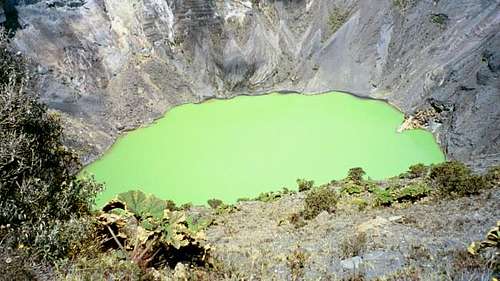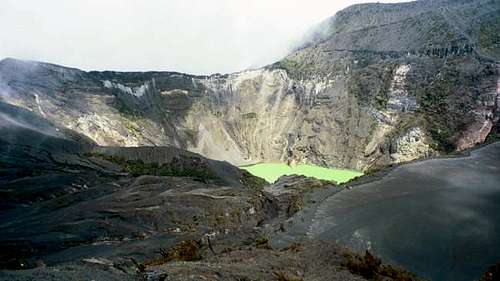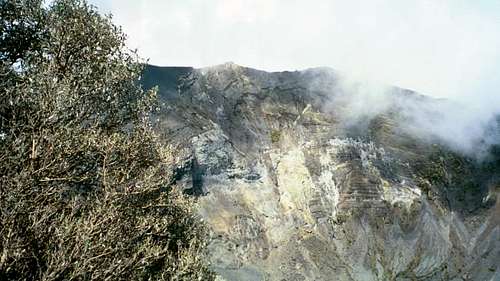|
|
Mountain/Rock |
|---|---|
|
|
9.97900°N / 83.852°W |
|
|
11259 ft / 3432 m |
|
|
Overview
Volcán Irazu (3432 meters) is the highest volcano in Costa Rica. Because of this fact, many confused tourist believe this to mean that Irazu the highest peak in Costa Rica. In reality there are several higher peaks in the Cordillera de Talamanca. There have been recorded eruptions of Irazu since 1723. The last major eruption occurred on March 19, 1963, the day John F. Kennedy arrived on a visit. Ash from this eruption covered the whole Central Valley, including the capital San Jose, and piled up to 0.75 meters (2 feet) deep! There have been no major eruptions since 1963, but the crater is still boiling and steaming. There was a small eruption in 1994. The ash from the volcano makes the surrounding hillsides and valleys very fertile.
There are two major craters of Volcán Irazu. The Principal Crater is 1050 meters wide and 300 meters deep. Diego de la Haya Crater is 690 meters wide and 100 meters deep and contains a lake.
From the summit, it is possible to see both the Caribbean and Pacific, but such clear days only happen on 3-4 days a year. There is a paved road to near the summit of Irazu, but there are several short trails around the crater area.
Getting There
There are several options for getting to Volcán Irazu. Most people take a guided tour. This will cost (February 2004) between $24 and $40 depending on the services. Every hotel or hostel in San Jose doubles as a travel agency, so don’t worry about finding a trip to book!
If you want to visit Volcán Irazu independent of a tour, Buses Metropoli (272-0651) operates weekend (no weekday service except for peak season and holidays) bus service to Volcán Irazu. The bus leaves from San Jose at Avenida 2, Calle 1 & 3 across from the Gran Hotel Costa Rica at 8 am. The fare is $5 round trip. The bus leaves Irazu at 1 pm for San Jose.
You can also hire a taxi for $25 from San Jose, but unless you have a group of people, its better just to go on the guided tour.
Hiking Routes
Since there is a road to the summit, there isn’t too much hiking here, at least not in a mountaineering or long trekking sense, but there are some very good short hikes in the summit area. There is a 1 km (0.6 mile) long trail from the summit parking lot that goes to a look out of some of the craters and this hike is highly recommended. There is also a longer trail, marked by a pedestrian sign that gets even closer to the craters as well.
For longer hikes, check out the nearby Volcán Turrialba.
Since temperatures on the summit of Irazu have varied between –3C (27F) and 17 C (63F), so take a jacket. Don't forget to take a camera.
Red Tape
There is a $6 fee for entering the national park. This is usually included in the price if you’re going on a guided tour.
When To Climb
December through March is the driest season, and the best time to visit the peaks. February is the driest month of all and has the best weather, but December and January are greener since those months are just after the rainy season.
It is sometimes very wet on the volcano, even in the dry season. There's a reason this area is called a rain forest and cloud forest! It can be very cool at higher elevations as well.
Temperatures on the summit of Volcán Irazu have varied between –3C (27F) and 17 C (63F).
Camping
Everyone who visits Volcán Irazu does so on a day trip. There is no camping in the national park.
Mountain Conditions
You can check the weather forecast for San Jose at WEATHER.COM, but the weather is so much wetter and cooler on the volcano, that the weather forecast for San Jose doesn't tell you much.





